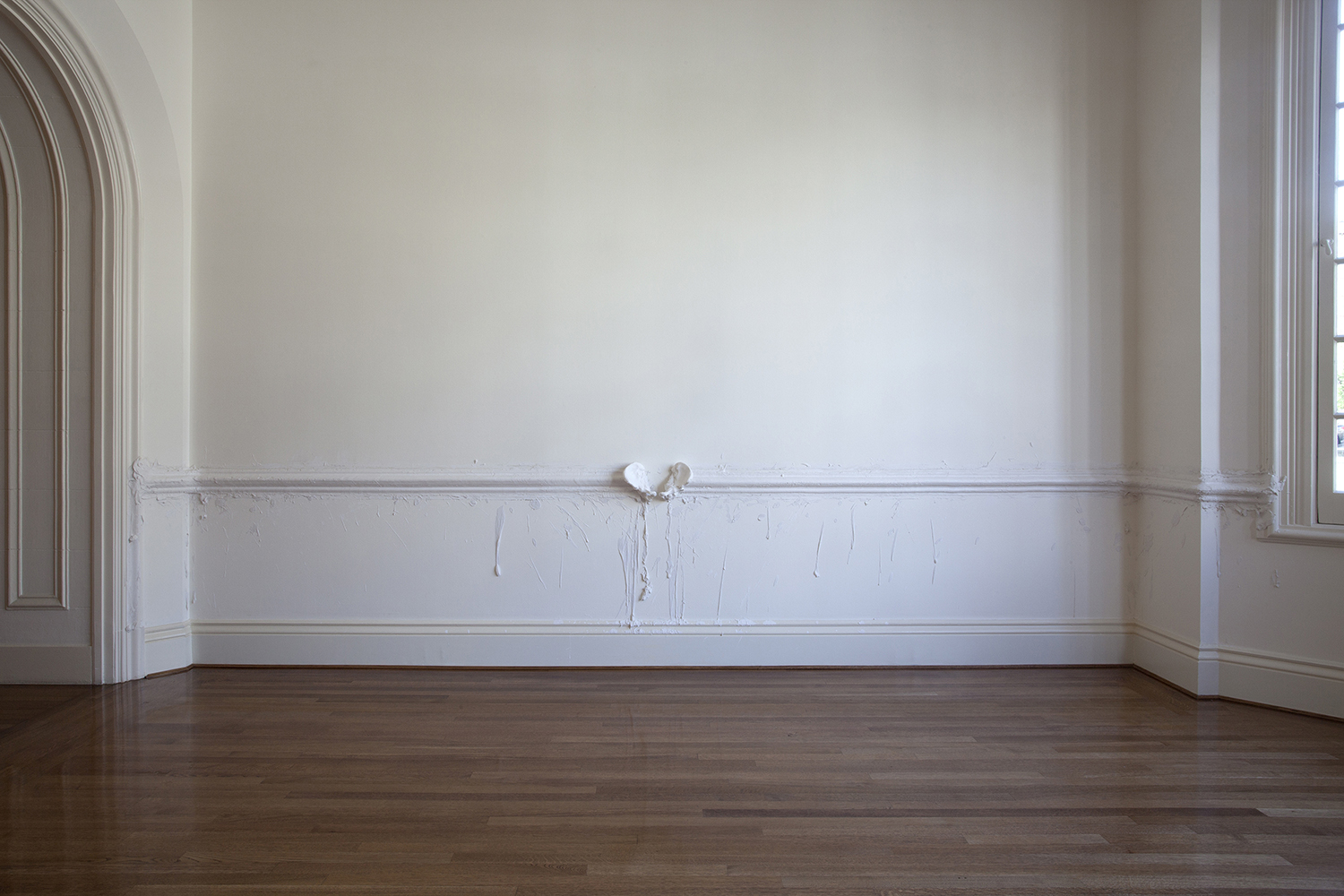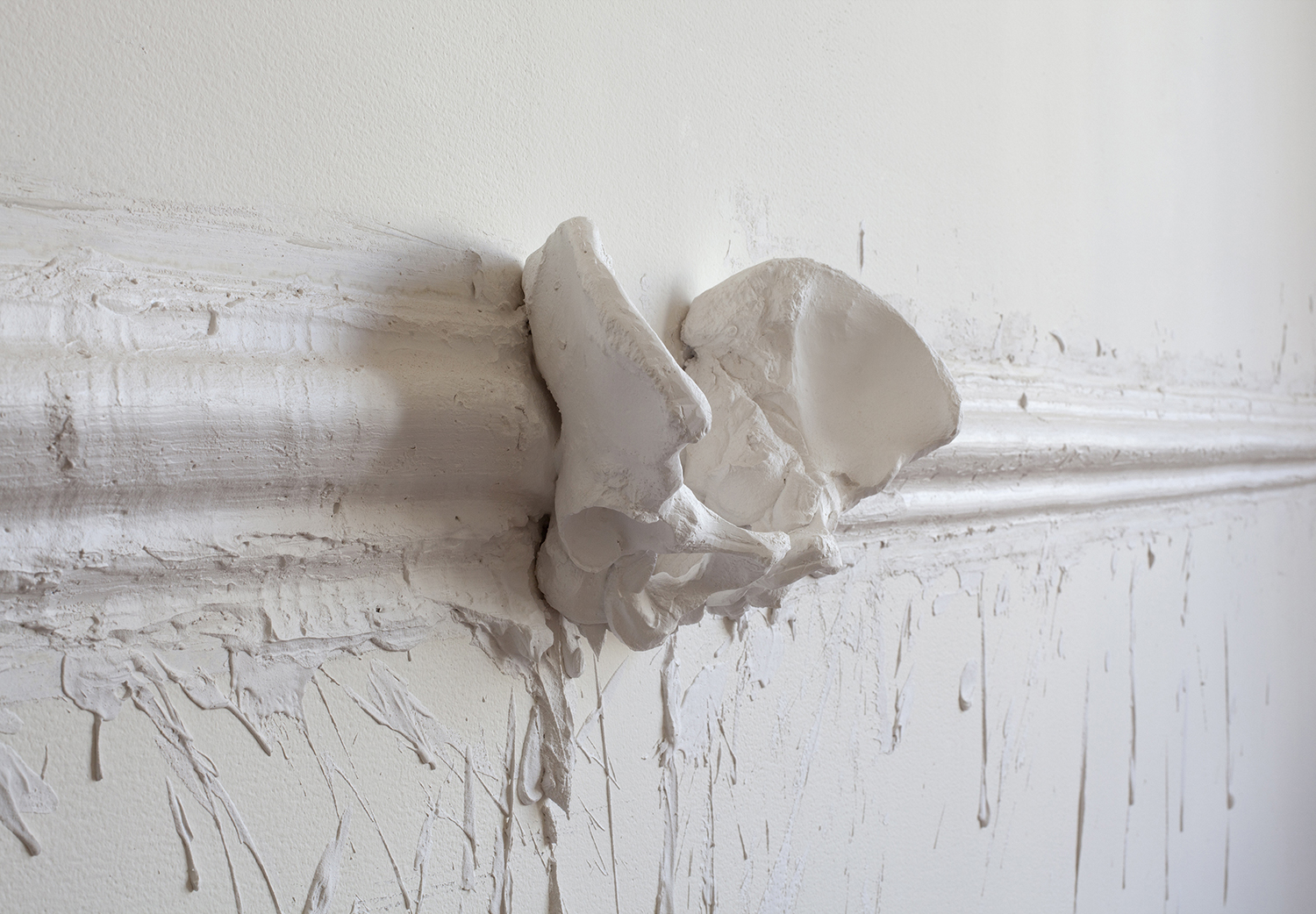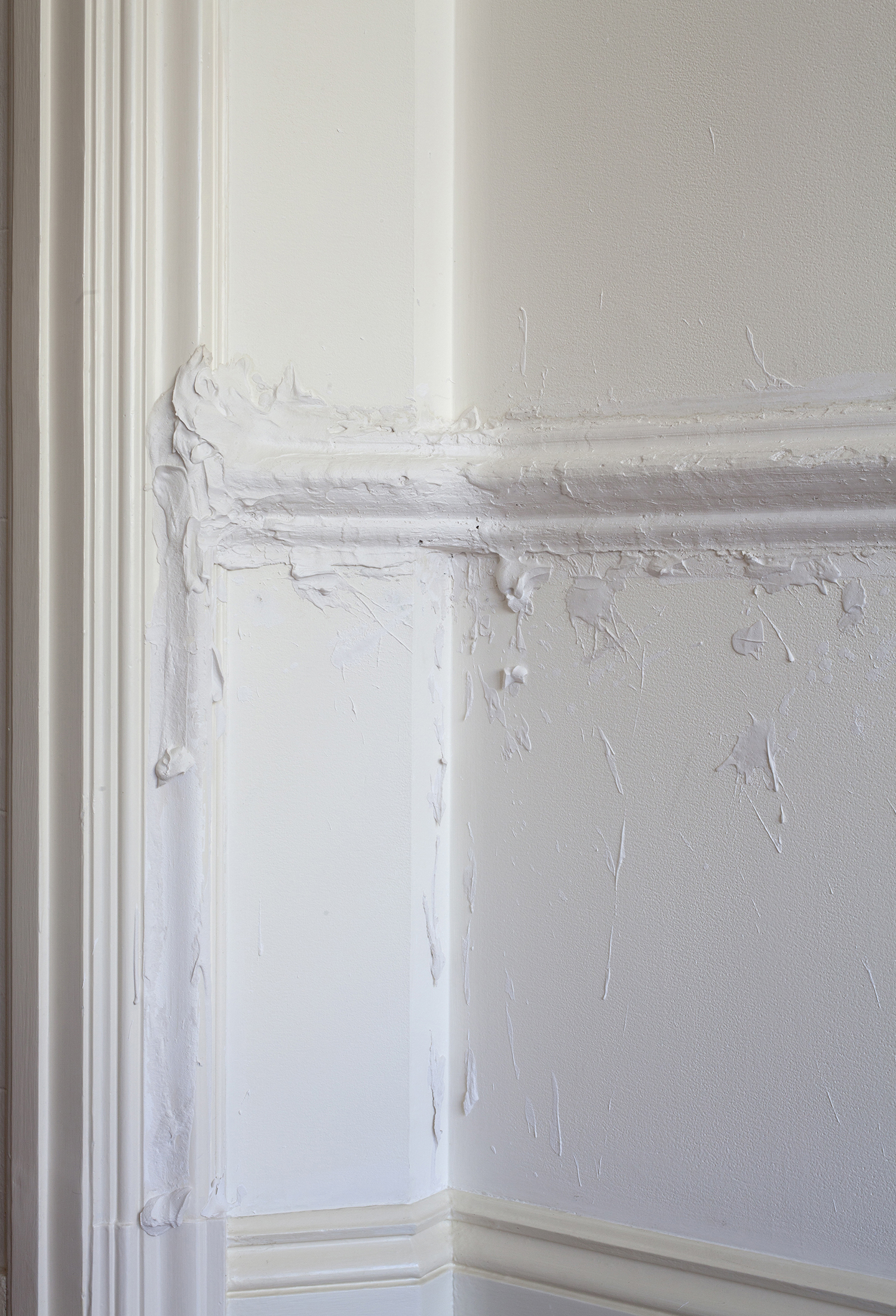

Janine Antoni
Crowned, 2013
Plaster molding with plaster pelvic bones
Dimensions variable, site-transferrable installation
Installation view at Anthony Meier Fine Arts
San Francisco, 2015
In Crowned, Antoni uses a pair of childbearing pelvic bones to make architectural molding. Placed at hip height like chair molding, Antoni’s gesture frames the room.
The traditional method used by masters for making plaster molding is called “running in place.” It involves pulling a tool, shaped to a specific profile, along wet plaster that has been packed onto the wall until a smooth profile is extruded. The plasterer then returns the walls to a spotless, immaculate surface, removing any trace of this messy, involved process. To make her molding, Antoni substitutes the profile of a classical pattern for the profile of the pelvic bone’s inner edge. While pulling, Antoni lets the splatters of plaster give way to gravity and spill off the hipbone onto the wall as it is dragged along the plaster packed architecture.
Crowned reinforces a relationship between the body and its dwelling. Traditional classical and gothic architecture is square and angular in its design, and its molding creates shadows that are used to accentuate these linear qualities. Antoni’s molding strives to reconcile the architecture with the physical form of the human body. It is not broken by mitered corners, but rather is a singular pull around the room, reflecting how the body would turn in the space itself. As the pull is concluded, Antoni leaves her tool, a pair of childbearing pelvic bones, frozen in the plaster as evidence of this visceral gesture, reminding us that the womb is our first form of architecture.


